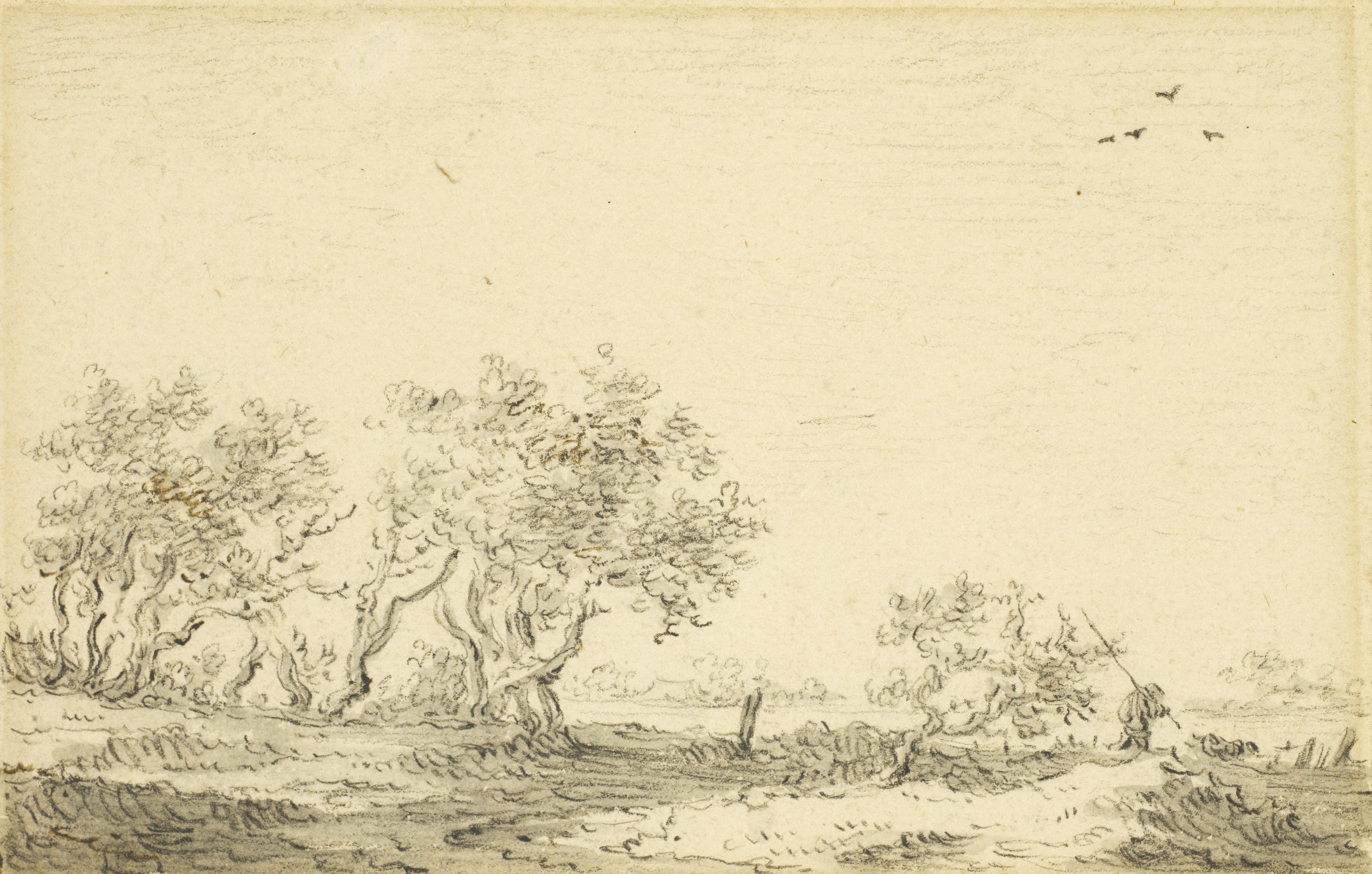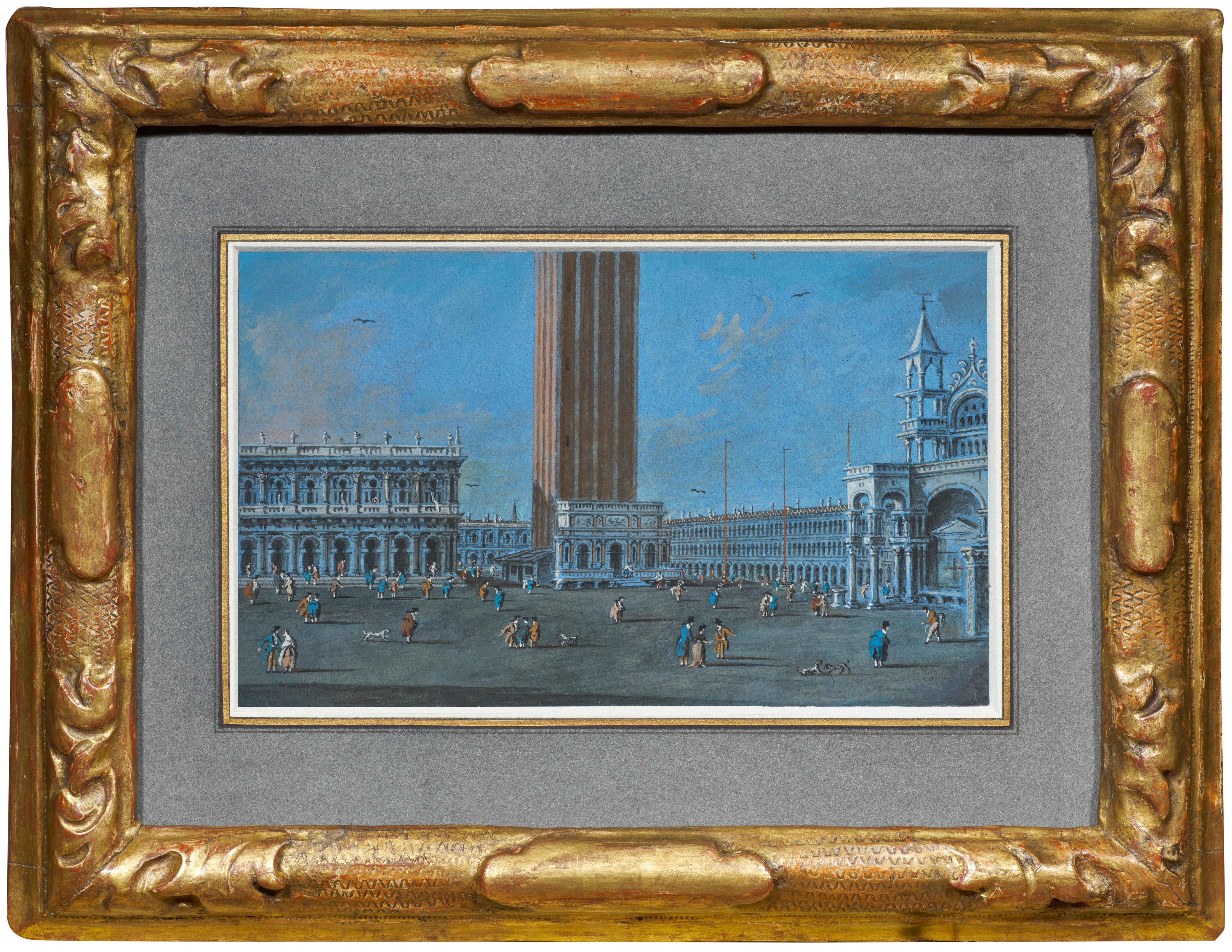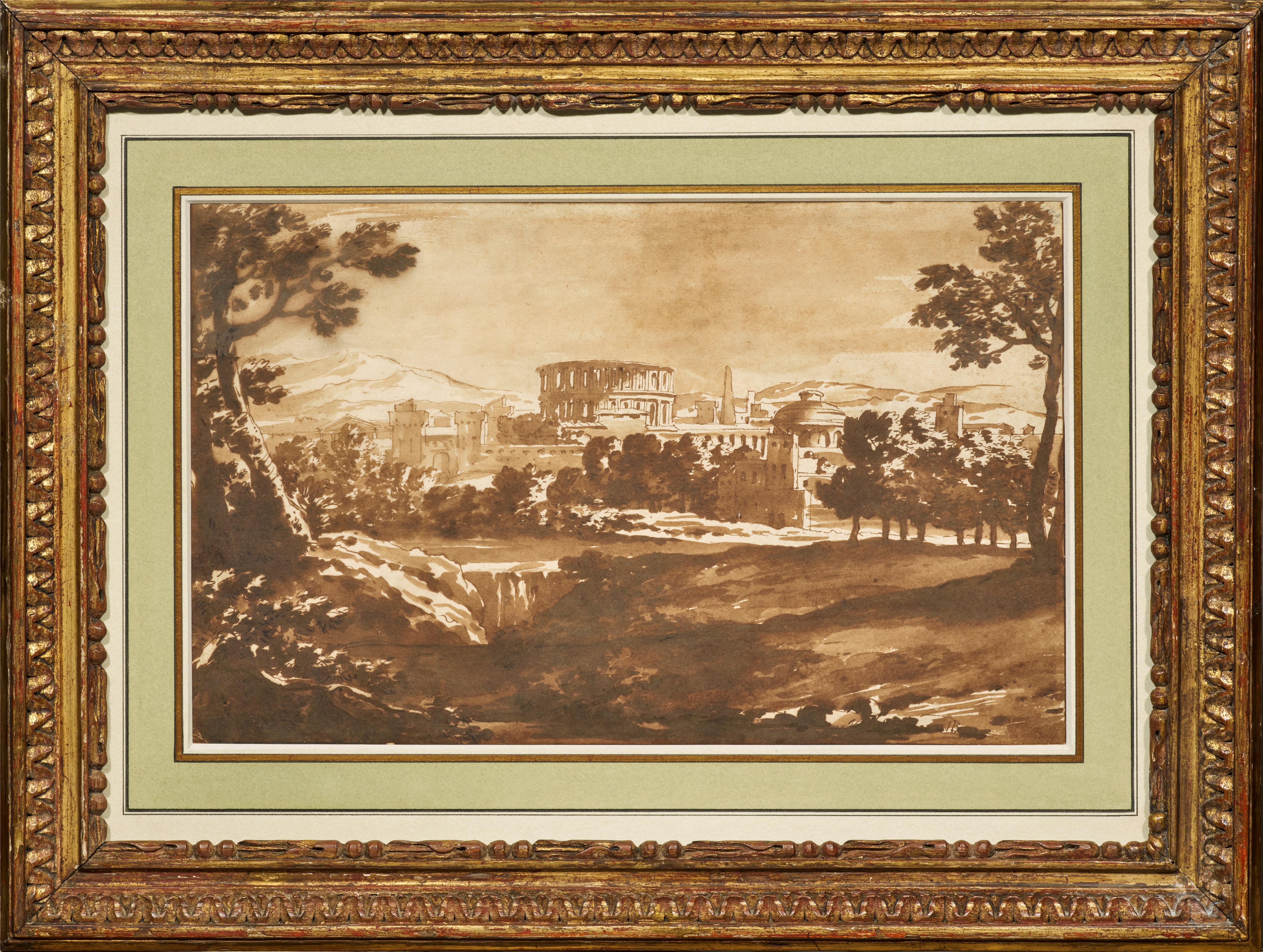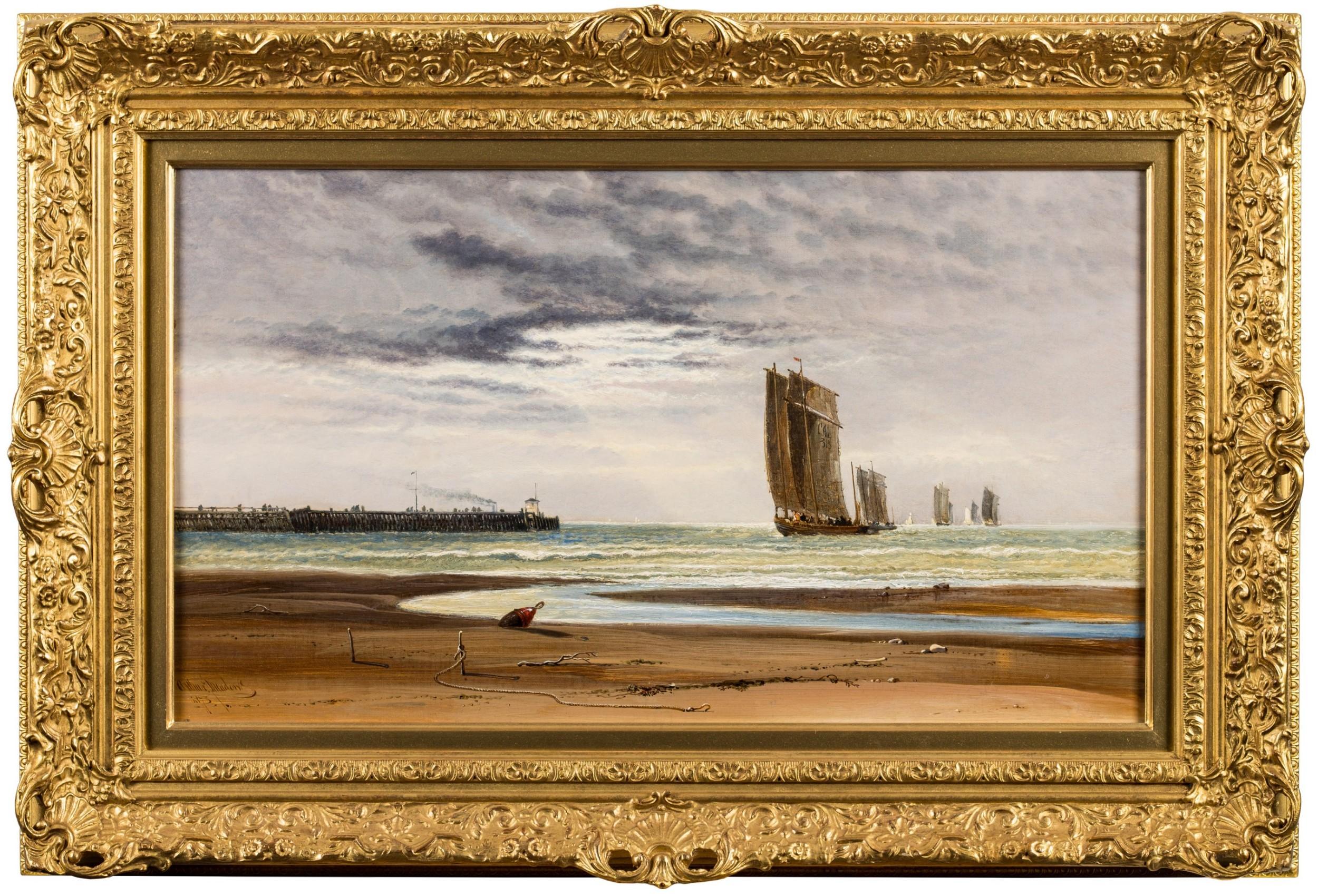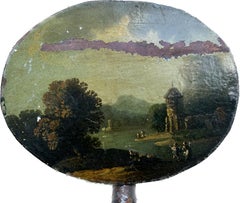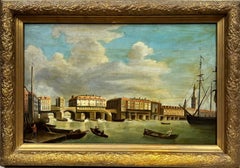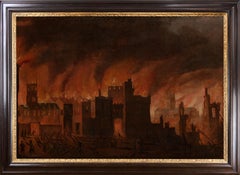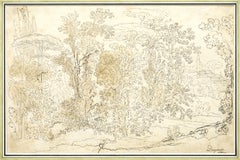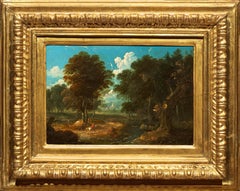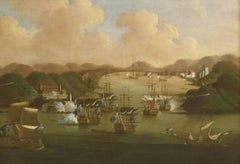
The capture of Porto Bello, 21st November 1739 , large oil painting on canvas
View Similar Items
Want more images or videos?
Request additional images or videos from the seller
1 of 7
Studio of Samuel ScottThe capture of Porto Bello, 21st November 1739 , large oil painting on canvasc.1740
c.1740
About the Item
- Creator:Studio of Samuel Scott (1703 - 1772, British)
- Creation Year:c.1740
- Dimensions:Height: 27 in (68.58 cm)Width: 36 in (91.44 cm)Depth: 2 in (5.08 cm)
- Movement & Style:
- Period:1740-1749
- Condition:
- Gallery Location:Cirencester, GB
- Reference Number:1stDibs: LU50932364133

About the Seller
5.0
Platinum Seller
These expertly vetted sellers are 1stDibs' most experienced sellers and are rated highest by our customers.
Established in 1989
1stDibs seller since 2016
3,432 sales on 1stDibs
Typical response time: 2 hours
More From This SellerView All
- French Old Master Antique Oil Painting For Restoration Figures Classical LandscpLocated in Cirencester, GloucestershireFigures in a Classical Landscape French School, 18th/ 19th century oil painting on copper, unframed copper: 4 x 5 inches provenance: private collection condition: the work has paint ...Category
19th Century Old Masters Landscape Paintings
MaterialsOil
- 19th Century Continental Oil Painting City River Busy Shipping Scene framedLocated in Cirencester, GloucestershireEuropean School, 19th century View of boats on water and buildings oil on board, framed framed: 16 x 22 inches board: 11.5 x 17.5 inches private collecti...Category
Mid-19th Century Old Masters Landscape Paintings
MaterialsOil
- 17th Century Dutch School Travellers in Winding Landscape Oil on CanvasLocated in Cirencester, GloucestershireArtist/ School: 17th Century Dutch School Title: An Extensive River Landscape with Figures in the foreground Medium: oil painting on canvas, framed Pai...Category
17th Century Old Masters Landscape Paintings
MaterialsOil
- 1600's French Old Master Oil Painting Nude Figures in Landscape Oil on PanelLocated in Cirencester, GloucestershireNude Figures in Wooded Landscape French School, 17th century oil on wood panel, framed framed: 25.5 x 21.5 inches board: 20 x 15.5 inches provenance: private collection, France condi...Category
17th Century Old Masters Figurative Paintings
MaterialsOil
- Early 1800's English Oil Painting Figure in Rural Woodland Landscape, originalBy circle of John ConstableLocated in Cirencester, GloucestershireArtist: English School, early 1800's, circle of John Constable (British 1776-1837) Title: The Woodland Path Medium: oil on canvas, framed Size: 12 x 22 inches Picture: 9 x 18 inches Provence: from a private collection in East Anglia...Category
Early 19th Century Old Masters Landscape Paintings
MaterialsCanvas, Oil
- Classical Landscape, Original Glazed Frame, SignedLocated in Cirencester, GloucestershireGrand Tour Study Italian School, 18th century monogrammed, lower right hand corner, Watercolour wash painting on board, glazed frame Framed size: 9 x 11 inches The painting captures...Category
18th Century Old Masters Landscape Paintings
MaterialsWatercolor
You May Also Like
- Early oil depicting the Great Fire of LondonLocated in London, GBThe Great Fire of London in September 1666 was one of the greatest disasters in the city’s history. The City, with its wooden houses crowded together in narrow streets, was a natural fire risk, and predictions that London would burn down became a shocking reality. The fire began in a bakery in Pudding Lane, an area near the Thames teeming with warehouses and shops full of flammable materials, such as timber, oil, coal, pitch and turpentine. Inevitably the fire spread rapidly from this area into the City. Our painting depicts the impact of the fire on those who were caught in it and creates a very dramatic impression of what the fire was like. Closer inspection reveals a scene of chaos and panic with people running out of the gates. It shows Cripplegate in the north of the City, with St Giles without Cripplegate to its left, in flames (on the site of the present day Barbican). The painting probably represents the fire on the night of Tuesday 4 September, when four-fifths of the City was burning at once, including St Paul's Cathedral. Old St Paul’s can be seen to the right of the canvas, the medieval church with its thick stone walls, was considered a place of safety, but the building was covered in wooden scaffolding as it was in the midst of being restored by the then little known architect, Christopher Wren and caught fire. Our painting seems to depict a specific moment on the Tuesday night when the lead on St Paul’s caught fire and, as the diarist John Evelyn described: ‘the stones of Paul’s flew like grenades, the melting lead running down the streets in a stream and the very pavements glowing with the firey redness, so as no horse, nor man, was able to tread on them.’ Although the loss of life was minimal, some accounts record only sixteen perished, the magnitude of the property loss was shocking – some four hundred and thirty acres, about eighty per cent of the City proper was destroyed, including over thirteen thousand houses, eighty-nine churches, and fifty-two Guild Halls. Thousands were homeless and financially ruined. The Great Fire, and the subsequent fire of 1676, which destroyed over six hundred houses south of the Thames, changed the appearance of London forever. The one constructive outcome of the Great Fire was that the plague, which had devastated the population of London since 1665, diminished greatly, due to the mass death of the plague-carrying rats in the blaze. The fire was widely reported in eyewitness accounts, newspapers, letters and diaries. Samuel Pepys recorded climbing the steeple of Barking Church from which he viewed the destroyed City: ‘the saddest sight of desolation that I ever saw.’ There was an official enquiry into the causes of the fire, petitions to the King and Lord Mayor to rebuild, new legislation and building Acts. Naturally, the fire became a dramatic and extremely popular subject for painters and engravers. A group of works relatively closely related to the present picture have been traditionally ascribed to Jan Griffier...Category
17th Century Old Masters Landscape Paintings
MaterialsOil, Canvas
- Italian Landscape, a drawing by Louis-Jean Desprez (1743 - 1804)Located in PARIS, FRThis landscape, masterfully executed in pen and wash by Louis-Jean Desprez around 1779, probably represents a view of the Roman countryside. The treatment of the trees is very similar to that of two engravings which Desprez executed in Rome, The Island of Cythera and The Temple of Love. 1. Louis-Jean Desprez, a cosmopolitan life between Italy and Sweden Born in Auxerre in 1743, Louis-Jean Desprez probably began his apprenticeship with the engraver Charles-Nicolas Cochin...Category
1770s Old Masters Landscape Drawings and Watercolors
MaterialsCarbon Pencil, Ink
- Stag Hunting in the Vicinity of Nuremberg by a German Artist Peter von BemmelLocated in PARIS, FRThis small landscape shows a hunting scene: two riders are chasing a stag with their dogs at the edge of a forest. Signed by Peter von Bemmel, it is typical of the production of this...Category
1720s Old Masters Landscape Paintings
MaterialsCopper
- A rural landscape, a drawing partly attributed to Francois BoucherBy François BoucherLocated in PARIS, FRProvenance: • Bought from Sicart in Lyon by the Marquis de Chennevières (1820 - 1899) - Chennevières Collection (stamped lower left - Lugt 2072) • Inscribed on the back of the mount "Salle 10/Delestre, 27 February 1899” • Sold in Paris at the Hôtel Drouot during the second Chennevières sale (4 to 7 April 1900, n°44) as François Boucher - number 44 (sold for 18 francs to Roblin) • Sold in Paris at the Hôtel Drouot, 4 and 5 March 1901, n°12 as François Boucher Bibliography: this drawing is cited by Chennevières in "Une collection de dessins d'artistes français" (chapter XVIII, page 24-25) and is number 1033 of the Catalogue de la Collection Chennevières compiled by Louis-Antoine Prat with the collaboration of Laurence Lhinares. This well-documented drawing was given to Boucher by the Marquis de Chennevières, one of the most important collectors of drawings at the end of the 19th century. While the landscape is reminiscent of Boucher's other landscape drawings, our drawing was probably modified at a later stage by the addition of the two figures in the right foreground and by the slight enhancement of the horizon line behind them. 1. François Boucher, the master of French rocaille The extraordinary career of Francois Boucher was unmatched by his contemporaries in versatility, consistency, and output. For many, particularly the writers and collectors who led the revival of interest in the French rococo during the last century, his sensuous beauties and plump cupids represent the French eighteenth century at its most typical. His facility with the brush, even when betraying the occasional superficiality of his art, enabled him to master every aspect of painting – history and mythology, portraiture, landscape, ordinary life and, as part of larger compositions, even still life. He had been trained as an engraver, and the skills of a draftsman, which he imbued in the studio of Jean-Francois Cars (1661 – 1738), stood him in good stead throughout his career; his delightful drawings are one of the most sought-after aspects of his oeuvre. As a student of Francois Lemoyne (1688 - 1737), he mastered the art of composition. The four years he spent in Italy, from 1727-1731, educated him in the works of the masters, classics, and history, that his modest upbringing had denied him. On his return to Paris in 1734, he gained full membership of the Royal Academy of Painting and Sculpture with his splendid Rinaldo and Armida (Paris, Musée du Louvre). Although, throughout his career, he occasionally painted subjects taken from the Bible, and would always have considered himself first as a history painter, his own repertoire of heroines, seductresses, flirtatious peasant girls and erotic beauties was better suited to a lighter, more decorative subject matter. His mastery of technique and composition enabled him to move from large scale...Category
1740s Old Masters Landscape Drawings and Watercolors
MaterialsChalk
- A landscape drawing by Claude Lorrain, with a preliminary sketch on the versoBy Claude LorrainLocated in PARIS, FRThis study presents a typical Roman countryside landscape: an ancient mausoleum in front of which a cart is passing by followed by two peasants. If the technique (a pen drawing on graphite lines, completed with a wash of brown and grey inks) and the signature inevitably evoke the art of Lorrain, we find on the verso of this drawing additional evidences that lead us to consider this unpublished drawing as a work by the master. The motif of the mausoleum has been taken up in pen on the verso in a technique that can be found in several other drawings by Lorrain. There is also a study of three characters, which can be considered as preparatory to Lorrain’s painting entitled The Port of Ostia with the Embarkation of Saint Paula, leading us to claim this attribution with a dating of around 1629. 1. Claude Lorrain or the perfection of classical landscape in Rome in the 17th century Claude Gellée was born in 1600 in Chamagne in Lorraine. Orphaned at the age of twelve, he spent a year with his brother in Freiburg, where the latter was a woodcarver. Claude Gellée then probably arrived in Rome in 1613, where he joined the workshop of Agostino Tassi (1580 - 1644) in 1617. Between 1619 and 1620 he studied for two years in Naples in the workshop of Goffredi Wals (who was himself a former pupil of Tassi). In 1625 he returned to Lorraine for two years where he worked alongside Claude Deruet. He then returned to Rome, a city he never left for the rest of his life (except for short trips to the surrounding countryside). From 1627 to 1650 he lived in Via Margutta. From 1635 onwards he became a renowned painter and commissions started to pour in. Considered during his lifetime as the most accomplished of the classical landscape painters, his reputation never faded. Between 1629 and 1635 Le Lorrain often went to the Roman countryside to draw with his friend Joachim von Sandrart (1606 - 1686). He became a member of the Academy of Saint Luke in 1633, while being closely acquainted with the Bentvueghels, this guild which brought together the young Nordic painters active in Rome. In 1643 he joined the Congregation of the Virtuosi. In 1650 he moved to Via Paolina where he lived until his death. Little is known of his intimate life. He seems to have had a daughter, Agnes, from an ancillary love affair. In 1657/ 1658 she moved in with him. Stricken with gout in 1663, he died in 1682. 2. Description of the drawing; the technique of nature studies Two peasants are walking behind a horse-drawn cart on a road that winds through ancient tombs. While a rectangular tomb with a columned facade can be seen in the distance, the cart passes an important ancient building. It has a circular shape and its partially ruined façade is decorated with columns. The start of a second floor can...Category
1660s Old Masters Landscape Drawings and Watercolors
MaterialsInk, Graphite, Pen
- Italian Landscape with Jack Players, a painting by Gaspard Dughet (1615 - 1675)By Gaspard DughetLocated in PARIS, FRHere Gaspard Dughet offers us an idyllic vision of the Roman countryside. The stages follow one another in a perfectly structured composition, revealing here a lake, there travellers walking along, gradually leading our eye to the blue horizon. But behind its classical composition, this landscape is particularly interesting because of three anthropomorphic details that the artist has hidden, opening the way to a radically different interpretation... 1. Gaspard Dughet, a landscape artist in the light of Poussin Gaspard Dughet was born on June 4th, 1615 in Rome where his father, of French origin, was a pastry cook. He was probably named Gaspard in honour of his godfather Baron Gaspard de Morant, who was, or may have been, his father's employer. His older sister Jeanne married the painter Nicolas Poussin (1594 - 1655) on September 1st, 1630. The young Gaspard was apprenticed with his brother-in-law at the beginning of 1631, which led his entourage to name him Gaspard Poussin. The first preserved works of the painter date from the years 1633-1634 and were painted in Poussin’s studio. Around 1635, Gaspard Dughet became emancipated and began to frequent the Bamboccianti circle. In 1636, he became friends with the painter Jean Miel (1599 - 1656), but also with Pier Francesco Mola (1612 - 1666) and Pietro da Cortona (1596 - 1669). This was also the time of his first trips throughout Italy. The painter, although of French origin, appears never to have visited France. In 1646 he settled permanently in Rome. A recognized painter with a solid book of orders, he remained faithful to landscape painting throughout his life, alternating between cabinet paintings and large decorative commissions, using both oil and fresco. Nailed to his bed by rheumatic fever at the age of 58, he died on May 25, 1675. 2. Discovering an idealized landscape Beyond a relatively dark foreground that takes us into the landscape, we discover a vast bluish horizon: a plateau surrounded by deep ravines advances to the right, overhanging an expanse of water that sparkles below. A road winds through a mountainous mass as if leading us to the fortress that crowns it; another town appears in the distance at the foot of three conical mountains. The composition is rigorous, mineral, and structured by geometric volumes. The various stages in the landscape lead one to the next attracting the eye towards the horizon located in the middle of the canvas. The general impression is that of a welcoming and serene nature. In many places the paint layer has shrunk, or become transparent, revealing the dark red preparation with which the canvas was covered and accentuating the contrasts. Human presence is limited to three jack players, leaning against a mound in the foreground. Their long garments, which may evoke Roman togas, contribute to the timelessness of the scene. Close examination of the canvas reveals two other travellers on the path winding between the rocks. Made tiny by the distance, their introduction in the middle register, typical of Dughet's art, lengthens the perspective. While it is difficult to date the work of a painter who devoted his entire life to the representation of landscapes, it is certain that this painting is a work from his later years. The trees that occupied the foreground of his youthful compositions have been relegated to the sides, a stretch of water separates us from the arid mountains counterbalanced by two trees represented on the opposite bank. The introduction of this stretch of water in the middle of the landscape betrays the influence of the Bolognese and in particular of the Dominiquin (1581 - 1641) A number of similarities with a drawing in the British Museum might suggest a date around 1656-1657, since, according to Marie-Nicole Boisclair , it has been compared with the Prado's Landscape with the Repentant Magdalene, painted at that period. 3. Three amazing anthropomorphic details While some late Renaissance landscapes offer a radical double reading, allowing one to see both a face or a human body behind the representation of a landscape, it seems interesting to us to hypothesize that Gaspard Dughet had fun here by slipping in a few details that, taken in isolation, evoke human or animal figures. We will give three examples, looking closely at a cloud, the trunk of a broken tree and the top of a cliff. The main cloud could thus evoke a Christ-like face or that of an antique god...Category
1650s Old Masters Landscape Paintings
MaterialsOil
Recently Viewed
View AllMore Ways To Browse
Large Maritime Ship Painting
18th Century Indian Painting
Naval Battle Oil
Naval Battles Oil Painting
Old Antique Guns
Antique Iron Bath
Sea Captain Oil Painting
18th C Spanish Painting
Antique Brass Bath
Antique British Columbia
Old Masters Maritime
Six Flags
Antique Gun Oiler
18th Century Oils
Castillo Bird
Antique Hampton Wall
Antique Indian Flag
Dutch Sea Battle






